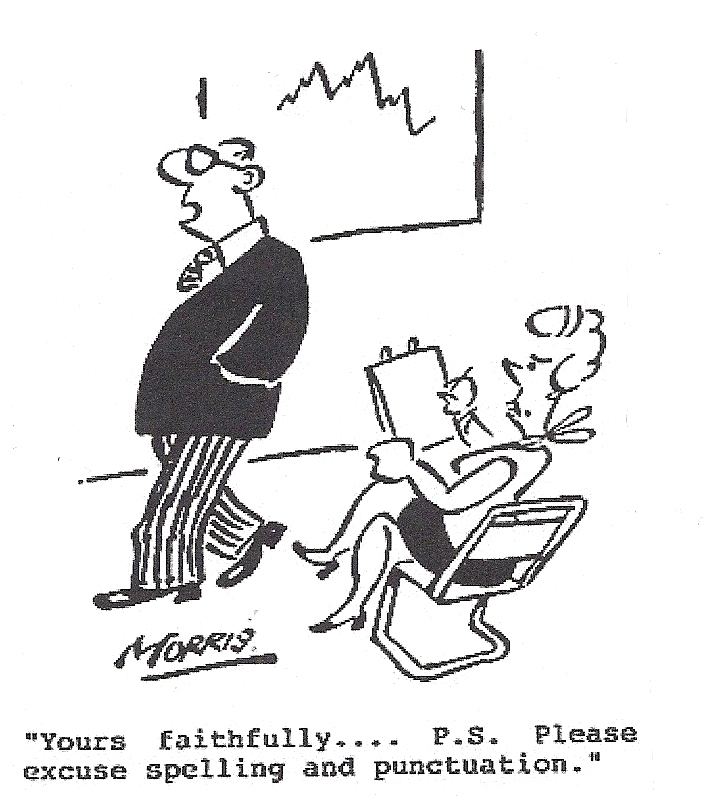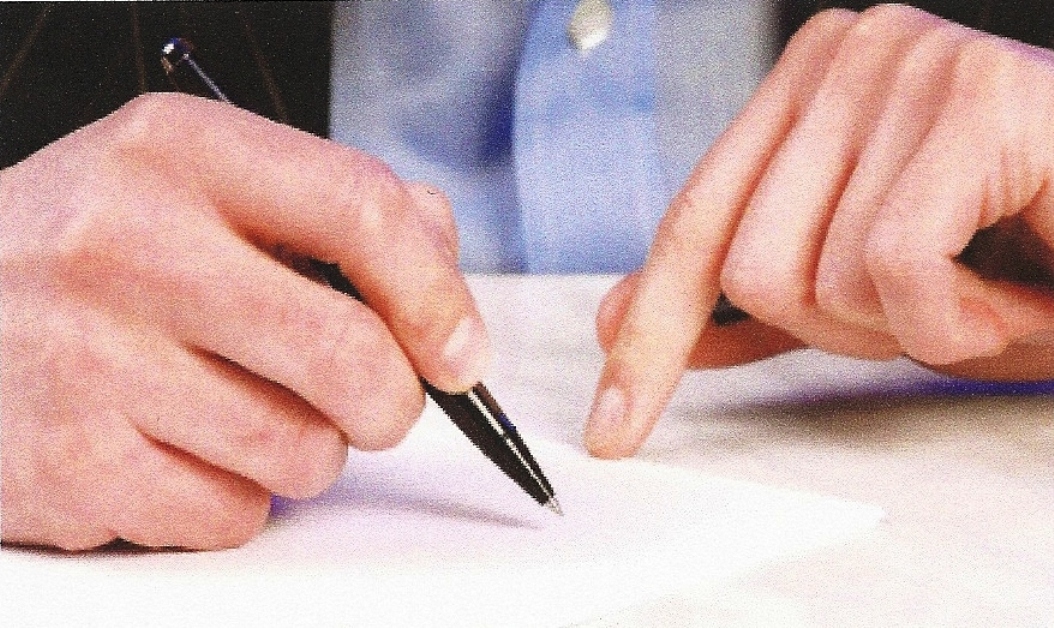
- •Improving Communications
- •Oral communications
- •Written communications
- •7 Tips to become a Good Conversationalist
- •Six Common Mistakes That Spoil Conversations
- •1. Blabbermouthing
- •2. The "take-away" and "me-too" syndrome
- •3. Unsolicited advice
- •4. Interrupting
- •5. Contradicting
- •6. Stingy contributors
- •8 Правил знайомства з діловими партнерами
- •18 Ways to improve your body language
- •6 Чарівних букв
- •Voice and Language
- •Visual aids
- •Fail to prepare
- •No weak opening
- •When I know I have to make a presentation, even a small one before a very limited number of people, I start feeling nervous…
- •When a big meeting is coming up, one that will involve a number of presentations from a range of people…
- •I would say my ability as a presenter is…
- •While I am up on stage, I…
- •Comments about my presentations are generally…
- •If I have to go “off the cuff”…
- •If I could describe public speaking as a food, it would be…
- •Visual aids versus handouts
- •Я к вдало провести ділову зустріч.
- •Introducing the Agenda
- •Introducing the First Item on the Agenda
- •1. What is the desired outcome of the meeting? (How will you know the meeting was successful?)
- •2. Who needs to be there? (And who doesn’t?)
- •3. Is the agenda prepared? (If not now, when?)
- •4. What can I do to prepare? (How can I help others prepare?)
- •5. What can I do to make this meeting succeed? (What is my responsibility?)
- •Discuss the following questions:
- •Exercise 6
- •Negotiating
- •Well, we could make it 7,5 % .
- •The trouble is, the general manager isn't very interested in marketing. He's only concerned about …..5…... If you make it 10%, I might be able to persuade him.
- •But you said…
- •6 Найпоширеніших помилок при проведенні переговорів
- •Communicating with someone in writing
- •The salutation
- •The subject title
- •The body of the letter
- •The parting
- •The signature
- •Inquiries (Enquiries)
- •Поради при написанні ділових листів
- •……………: Always proofread and edit your letters.
- •Avoid the use of …..1….. Words
- •Informal Style Formal Style
- •Identify yourself, if necessary
- •Include necessary information
- •Ten keys to writing an essay
- •Budget your time carefully
- •Read the topic carefully
- •Plan your essay before you write
- •Be sure your handwriting is as clear and legible as possible
- •Follow a clear, logical organization
- •Topic Type a: Contrast/Opinion
- •Use concrete examples and specific reasons
- •Use signal words to indicate transitions
- •Use a variety of sentence types.
- •Check your essay for errors.
- •Електронна пошта
- •Chief, Guy, Sport
- •My Buddy
- •Assumption Junction
- •Peak-a-Boo
- •2 (Suggested answer)
- •Listening 4
- •Contents
- •References
Communicating with someone in writing
Advantages & pleasures
|
Disadvantages & difficulties
|
2. Compare your list with your partners. Then read the text below and find out if you have mentioned all of them.
The advantages of written communication:
One advantage is that written messages do not have to be delivered on the spur of the moment; instead, they can be edited and revised several times before they are sent so that the content can be shaped to maximum effect. Another advantage is that written communication provides a permanent record of the messages that have been sent and can be saved for later study. Since they are permanent, written forms of communication also enable recipients to take more time in reviewing the message and providing appropriate feedback. For these reasons, written forms of communication are often considered more appropriate for complex business messages that include important facts and figures.
The disadvantages of written communication:
There are also several potential pitfalls associated with written communication, however. For instance, unlike oral communication, wherein impressions and reactions are exchanged instantaneously, the sender of written communication does not generally receive immediate feedback to his or her message. This can be a source of frustration and uncertainty in business situations in which a swift response is desired. In addition, written messages often enable recipients to take more time in reviewing the message and providing appropriate feedback, both because of their information-packed nature and the difficulty that many individuals have in composing such correspondence.
D
Discuss with your partner the following questions:
Which is more important for a company’s activity: the ability to communicate orally or in writing?
Which is more difficult?
What skills should a manager develop to be good at business writing?
What advice would you give to a person who would like to develop his/her writing skills?
What is the role of vocabulary, style and grammar in a business-writing activity?
How do you feel when you receive a letter with a lot of mistakes?

Are you a good business writer? What are your strengths and weaknesses?
Quiz: Are You a Grammar Geek?
Email
Tweet This
Post to Facebook
Share on LinkedIn
Print
![]() Related
Products
Related
Products
10 Must-Read Articles from HBR
by Clayton M. Christensen, Michael Overdorf, Thomas H. Davenport, Peter F. Drucker, Daniel Goleman, Robert S. Kaplan, David P. Norton, Rosabeth Moss Kanter, John P. Kotter, Theodore Levitt, Michael E. Porter, C.K. Prahalad,Gary Hamel
Buy it now »
How to Get the Right Work Done
by Gina Trapani, Steven DeMaio, Tony Schwartz, Catherine McCarthy, William Oncken Jr., Donald L. Wass, Stephen R. Covey
Buy it now »
HBR's Must-Reads on Managing Yourself
by Peter F. Drucker, William Oncken Jr., Donald L. Wass, Stephen R. Covey, Robert E. Quinn, Robert S. Kaplan, Tony Schwartz, Catherine McCarthy, Rosamund Stone Zander, Benjamin Zander
Buy it now »
When I teach writing, my students always make the same mistakes. Semester after semester I present them with a list of errors they will make, and they make them anyway.
You know what's next? Do this quiz just for fun.
Which is standard usage?
I'm on the Internet!
I'm on the internet.
What's wrong with: "I would like to apologize."
What's wrong with: "The project will be managed by the project manager."
Which is standard usage?
Done. And now? (one space after the period)
Done. And now? (two spaces)
Done. And now? (three spaces)
What's wrong with: "And, I told you so."
Which is correct?
a. Most hotels provide complementary wireless Internet.
b. Most hotels provide complimentary wireless Internet.
7. What’s wrong with: “Are either of you available to meet with Cisco rep
tomorrow?”
8. Which is correct a or b?
Although we went over archived e-mails until 11 pm, the record we were looking
for was _____________ .
a. illusive
b. elusive
Listen to the lecture on Business Writing. While listening make notes on the following:
KISS (what does it stand for?)
The number of words in an average sentence.
The length of a paragraph.
Punctuation.
Pre-reading Discuss the questions below with your partner. Then read the text and check your answers.
|
Business correspondence
|
Business correspondence is being defined as a way of communication through the exchange of letters. Business correspondence, being one of the most powerful tools in business agreements and other business deals, is actually evolving nowadays. We are now living in a computer era that’s why it is very understandable why there are gradual changes in the methods of business correspondence, from the way that is being written to the process of exchanging letters.
The different kinds of business correspondence that we use nowadays are business letters, memos, faxes and e-mails. Let us have an overview of them all. Business letters are the most established type of business correspondence. No one can ever imagine how long it has been in the business community. In fact whenever business correspondence is being talked about, business letter is the very first thing that would enter to our minds. Business memos are considered as secondary or just a by-product of business letters. Business memos are less formal and have a more conversational tone. Business faxes have been around much longer than business memos but because fax machines are not that available to most of the people before, it was not recognized until 1980’s. There are no established rules in writing faxes because it is being written the way that everyone considered appropriate. However, because there is now such a thing as faxing via computer, fax machines are now facing a slow death. E-mail is a fruit of technology and can be considered as a blessing because you can actually send all the workplace communication and the like in just a blink of an eye! It is now the most widely spread type of business correspondence in the modernized business community.
Business Letters
Writing effective business letters is not as difficult as it may seem. Business letters should conform to standard practices. A business letter has six essential parts: the heading, the inside address, the salutation or greeting, the body of the letter, the complimentary close, and the signature.
Business Letter Layout
Components of a Business Letter
Business letters are usually written on printed company forms (letter-paper). They comprise the following components.
The letterhead
The heading bears the name of a company, its post address, telephone, fax, e-mail address as well as some other information: names of directors, the particular official to whom all correspondence to be addressed, spaces for letter indexes (references).
Sender's address
In business correspondence that does not have a printed letterhead, the sender's address is written on the top right-hand side of the page. The address comprises the number of the building, street, city or town, state (USA) or county (GB), post/zip code, and country.
The date
The date is printed on the right-hand side below the sender's address, sometimes separated from it by a space. The month in the date is not recommended to write in figures that can be confusing, e.g. in GB and Europe: day, month, year; in the USA: month, day, year.
References
References are noted to indicate what a piece of correspondence refers to "Your ref.", and the correspondence to refer to when replying "Our ref.". References are written below the letterhead at the left margin of the letter.
The addressee's name, job title company name and address
The addressee's name, job title company name and address of a company are usually written below the references at the left margin of the letter. After the addressee's name his position is written, separated by a comma, e.g. Mr G. Wright, Vice-President. If the addressee's name is unknown, it is written as follows: "The Vice-President".




